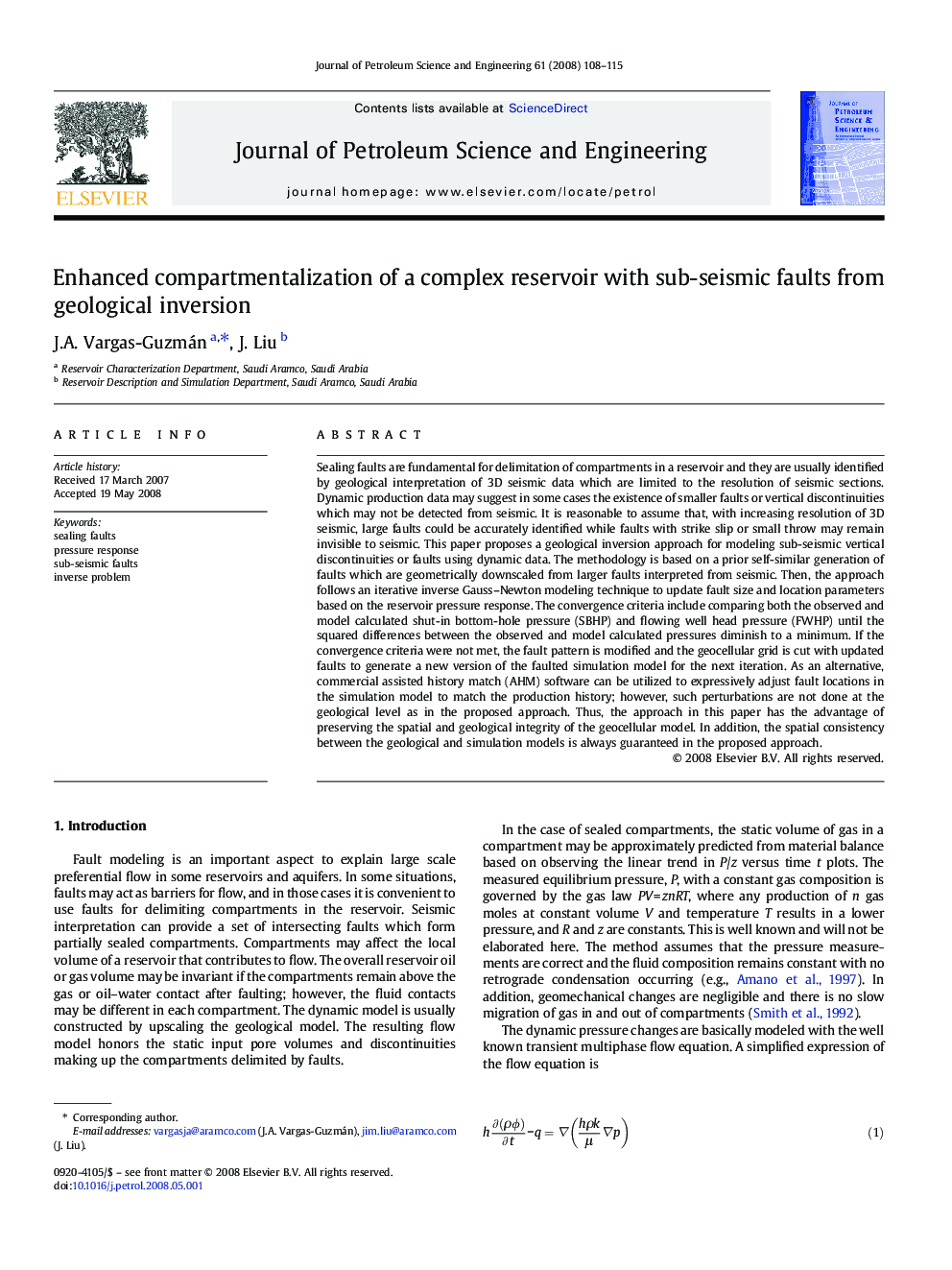| Article ID | Journal | Published Year | Pages | File Type |
|---|---|---|---|---|
| 1756068 | Journal of Petroleum Science and Engineering | 2008 | 8 Pages |
Abstract
Sealing faults are fundamental for delimitation of compartments in a reservoir and they are usually identified by geological interpretation of 3D seismic data which are limited to the resolution of seismic sections. Dynamic production data may suggest in some cases the existence of smaller faults or vertical discontinuities which may not be detected from seismic. It is reasonable to assume that, with increasing resolution of 3D seismic, large faults could be accurately identified while faults with strike slip or small throw may remain invisible to seismic. This paper proposes a geological inversion approach for modeling sub-seismic vertical discontinuities or faults using dynamic data. The methodology is based on a prior self-similar generation of faults which are geometrically downscaled from larger faults interpreted from seismic. Then, the approach follows an iterative inverse Gauss-Newton modeling technique to update fault size and location parameters based on the reservoir pressure response. The convergence criteria include comparing both the observed and model calculated shut-in bottom-hole pressure (SBHP) and flowing well head pressure (FWHP) until the squared differences between the observed and model calculated pressures diminish to a minimum. If the convergence criteria were not met, the fault pattern is modified and the geocellular grid is cut with updated faults to generate a new version of the faulted simulation model for the next iteration. As an alternative, commercial assisted history match (AHM) software can be utilized to expressively adjust fault locations in the simulation model to match the production history; however, such perturbations are not done at the geological level as in the proposed approach. Thus, the approach in this paper has the advantage of preserving the spatial and geological integrity of the geocellular model. In addition, the spatial consistency between the geological and simulation models is always guaranteed in the proposed approach.
Keywords
Related Topics
Physical Sciences and Engineering
Earth and Planetary Sciences
Economic Geology
Authors
J.A. Vargas-Guzmán, J. Liu,
